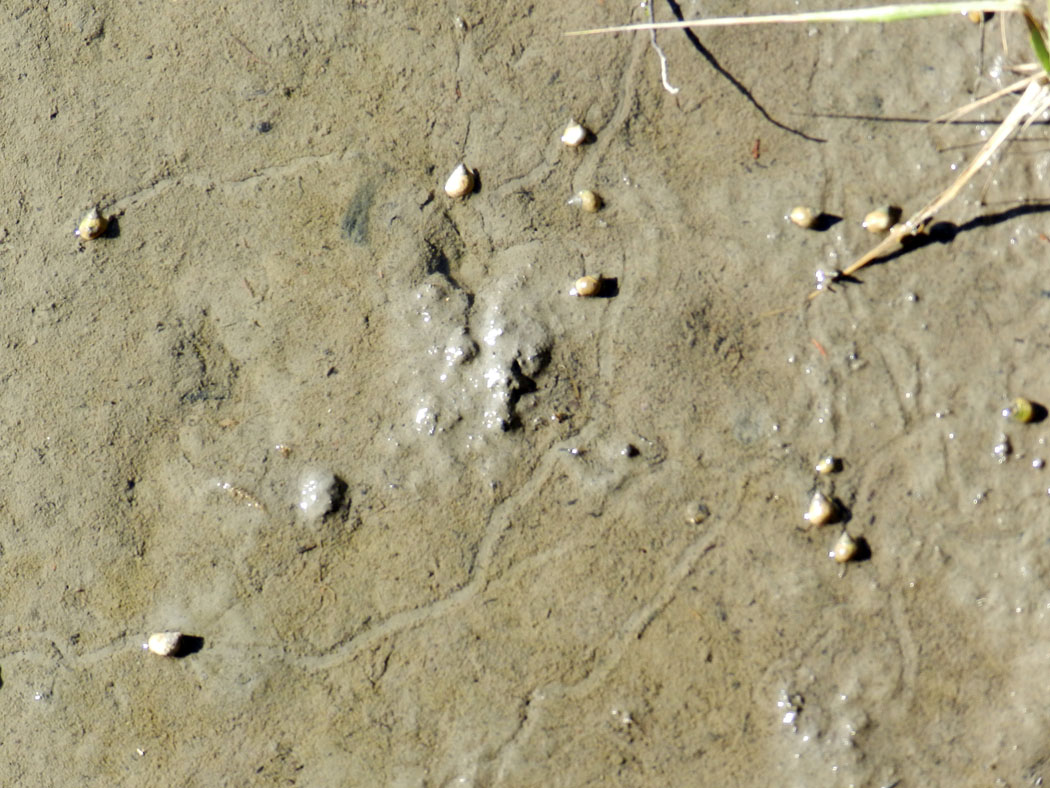In a celebration of the traces of the Georgia barrier islands and the holidays (in order of importance), over the next 12 days I will attempt to post photographs of Georgia-coast traces, along with brief explanations of them. As a special bonus, I may even point out why they’re interesting. But maybe the visual information provided by the photos of these traces (and sometimes their tracemakers) will do the talking for me. Marsh periwinkles (Littoraria irrorata) on a muddy high-marsh surface of Sapelo Island, Georgia, leaving nicely defined trails through their grazing. (Photograph by Anthony Martin.)
Marsh periwinkles (Littoraria irrorata) on a muddy high-marsh surface of Sapelo Island, Georgia, leaving nicely defined trails through their grazing. (Photograph by Anthony Martin.)
By happy coincidence, this photograph depicts 12 marsh periwinkles (Littoraria irrorata) on a marsh surface, making meandering trails while grazing on delectable algae. Normally this snail does most of its grazing on fungi and algae growing on stems and leaves of smooth cordgrass (Spartina alterniflora). So it was a treat to see these little tykes on a sedimentary surface, leaving some traces comparable to what earth scientists might find as trace fossils in the geologic record.
The trails they make are shallow furrows with millimeter-high levees, which they form by extending, anchoring, and pulling with a muscular foot, which helps the perwinkle’s shell to catch up with the rest of its body. They also leave mucus on their trails, which helps smooth out the ride for them, but also aids in preserving the form of their trails, as the mucus weakly binds the mud underneath where they travel.
A cautionary note for all budding ichnologists out there: notice how some of the trails made by different periwinkles intersect one another. This creates a false “branching” structure that – if fossilized – could be mistaken for a branching burrow made by one animal, which would make you doubly wrong. So if you encounter a trace fossil that looks like this, look at the “burrow” junctions (branching points), and see whether one part of the “burrow” cross-cuts the other, which may be marked by a levee. In other words, be a good scientist and test your hypothesis using, like, you know, evidence-based reasoning.
What will be the subject of the next traces, on the 11th day of Ichnology? I have no idea yet, but suppose we’ll both know by tomorrow. In the meantime, happy trails to you!
Further Information
Littorina irrorata: Marsh Periwinkle. Animal Biodiversity Web.
Littorina irrorata: Marsh Periwinkle. Smithsonian Marine Station at Fort Pierce.
Littorina irrorata: Marsh Periwinkle. Encyclopedia of Life.
